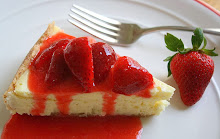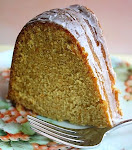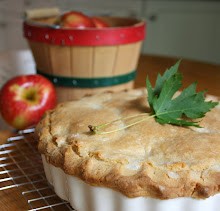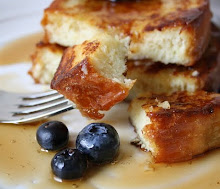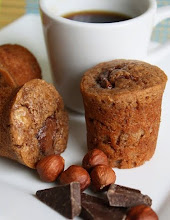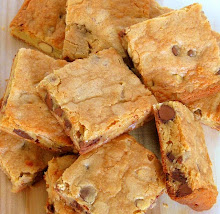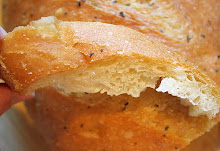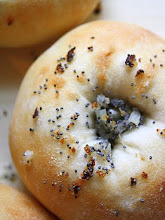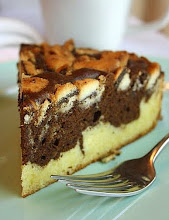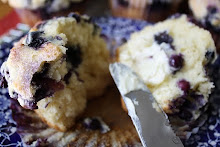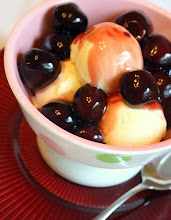Maybe this is too personal, but I just have to ask . . . Are you into cocoa (aka cacao) nibs? Because I am. And I love 'em. What are they, exactly? They're fragments of shelled, winnowed, roasted cacao (pronounced kuh-KOW) beans, the precious beans that bring us chocolate. Okay, big deal, you say. So what makes them remarkable? Well, I'll tell you. Each tiny nib is its own special-delivery parcel of profound flavor. Bite down, and it's like a little grenade going off in your mouth--intensely bright and dark at the same time. Ka-boom!
The effect a modest sprinkling of nibs can have on an otherwise mundane recipe is startling. Stir a handful into cookie dough. Sprinkle them judiciously over waves of whipped-cream on a mocha cream pie. Swirl them into homemade ice cream before you put it into the freezer to ripen. Add them into that buttery almond brittle recipe you're so famous for. Do you see where I'm going with this? Limitless possibilities, fellow bakers!
They taste kind of like coffee, but not as bitter, with a complex and curious finish that evokes tropical fruit. Sometimes I can even picture a banana in there! No kidding. And, of course, they also taste like dark chocolate, but not overtly so. You'd think they'd be chocolate-chocolate-chocolate all the way through, but that's not always the case. They're a mysterious and delightful conundrum.
And as for texture? Nibs, while hard and crunchy, are apt to shatter between your teeth more readily than something like a roasted coffee bean or a toasted almond. If you're unfamiliar with them and a little gun shy, try this: Put a few nibs on your tongue--not too many--close your eyes, and concentrate. Pay attention when you bite into them. If the grenade analogy is too scary for you, think of it as a flavor-parade marching through your mouth. You can't ignore a parade, can you? Definitely not. Cocoa nibs are like that. Once they're in food, they won't be ignored.
Though they're scarce in regular markets, you can often find them in health/gourmet food stores, where they're sometimes sold in bulk and are not necessarily too pricey. Maybe you, too, should add them to your baking arsenal?
About this recipe . . .
Adapted from the luscious new cookbook, Milk & Cookies, by pastry chef Tina Casaceli of New York city's Milk & Cookies Bakery, these treats are easy to toss together and will more than satisfy your cocoa craving. I customized the book's "base chocolate dough" recipe by adding in a half cup of nibs, along with dark chocolate chips and semisweet chunks. I also increased the amount of salt, and used coarse kosher; the very subtle saltiness is a critical component of this cookie's character. And, as usual, I fiddled with the recipe's directions, reflecting exactly what I did.
I'd initially hoped for cookies that would be thicker and not quite so spread out, but their thin, chewy/crispy quality was actually rather appealing. (But the next time I make them, I think I might add in a few more tablespoons of flour and see if that helps reduce the spreading.) Even after a couple of days, the baked cookies didn't harden completely but remained chewy-crispy. Tuck one of these babies into a petite scoop of vanilla ice cream, and it makes a mighty satisfying dessert.
Chocolate Cocoa-Nib Cookies . . . with Chocolate Chips
(For a printable version of this recipe, click here!)
Preheat oven to 350. Line cookie sheets with parchment paper.
2 and 3/4 cups all-purpose flour
1/4 cup Dutch processed cocoa powder (I used Penzey's brand. Really good.)
1 tsp. baking soda
3/4 tsp. salt (I used coarse kosher salt.)
1/2 cup cocoa nibs
1 cup unsalted butter, room temperature
3/4 cup granulated sugar
3/4 cup light brown sugar, packed
2 large eggs, room temperature
1 Tbsp. vanilla extract
1 and 1/2 cups dark chocolate chips (I used Ghirardelli brand.)
1 cup semisweet chocolate chips (Actually, I used Nestle semisweet chunks; they're about twice the size of regular chips.)
In a medium size bowl, gently whisk together the flour, baking soda, salt, cocoa powder, and cocoa nibs. Set aside.
In the large bowl of your mixer, using the paddle attachment, beat the butter for about three minutes or just until light and creamy. Still on medium speed, gradually pour in the white and brown sugars; keep beating until the mixture again looks light and creamy.
In a small bowl, break up the egg yolks, and lightly mix the eggs together with the vanilla. Pour this into the mixer bowl in two parts, beating to incorporate the liquid. Scrape the sides and bottom of the bowl after each addition.
On low speed, slowly add in the flour mixture, and beat just to combine. Take the bowl off the mixer and briefly stir by hand, using a spatula or wooden spoon. Add in all of the chocolate chips, just to evenly combine.
Chill the dough for at least an hour if it's extremely soft.
Use a small scoop or tablespoon to portion the dough onto the parchment, and leave plenty of room between each cookie (a couple of inches) since they spread quite a bit. Bake the cookies for about 12 minutes. They are done when they seem slightly browned/dry around the edges but still slightly soft in the middle. Let them cool for a few minutes on the cookie sheet before removing them to a cooling rack.
The cookie dough can be successfully frozen for about a month, or kept in the fridge for about a week.
(If you'd like to comment on this post, or to read any existing comments, please click on the purple COMMENTS below.)









